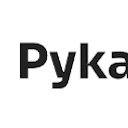AI Reply Generator

What is quickreply.cfd?
Quickreply.cfd offers an AI-driven platform designed to streamline message management and enhance customer interactions for businesses. It enables users to efficiently handle incoming messages and automate tailored responses, ultimately enhancing productivity and customer satisfaction. With Quickreply.cfd, users can generate personalized replies swiftly, choosing from various tones including Professional, Informative, Friendly, and Funny. Additionally, users have the option to view a demonstration of the platform's functionality through a video presentation.
How does Quickreply.cfd work?
Quickreply.cfd operates through sophisticated algorithms and AI technology, which analyze incoming messages to discern their intent and formulate appropriate responses. Users can select from a range of tones, including Professional, Informative, Friendly, and Funny, aligning with their preferred communication style and target audience. By automating the response process, Quickreply.cfd assists in saving time and enhancing the overall customer experience.
What are some features of Quickreply.cfd?
Quickreply.cfd offers a comprehensive set of features tailored to enhance chat workflows and optimize customer interactions:
- Responses Customization: Tailor chat workflows with rules and automations for personalized responses.
- Control: Exercise control over chatbot interactions, managing the timing and audience engagement.
- Route To Human: Seamlessly connect users with a human agent for more complex inquiries or specialized assistance.
- Menu Bars: Provide users with intuitive menu options for selecting relevant responses, enhancing navigation.
- Live Chat: Enable live chat functionality on your website, facilitating real-time communication with visitors.
- Integrations: Integrate Quickreply.cfd with various applications, including messenger platforms, APIs, and customer support tools for seamless workflow management.
- Branding: Customize the appearance of your chatbot to align with your company branding, maintaining consistency across platforms.
- Analytics: Gain insights into chatbot interactions and performance through comprehensive analytics, enabling informed decision-making and optimization strategies.
How much does Quickreply.cfd cost?
Quickreply.cfd offers a range of pricing plans tailored to diverse business requirements and budgets. Here's an overview of their plans and associated features:
Free Plan: $0 per month
- Includes 60 automated chats per month
- 1 agent login
- Live chat
- Website bot
- FB messenger bot
- Conversational landing pages
- Canned responses
- Integrations
- Notifications and reportsStarter Plan: $25 per month
- Includes 300 automated chats per month
- 1 agent login
- Everything in the Free Plan, plus:
- WhatsApp bot
- WhatsApp campaigns
- Analytics
- Email supportStandard Plan: $99 per month
- Includes 3,000 automated chats per month
- 2 agent logins
- Everything in the Starter Plan, plus:
- Automated FAQs
- Email and chat supportPlus Plan: $299 per month
- Includes 30,000 automated chats per month
- 5 agent logins
- Everything in the Standard Plan, plus:
- Phone support
Additionally, Quickreply.cfd offers the flexibility for businesses to request a custom plan tailored to their specific needs.
What are the limitations of quickreply.cfd?
Quickreply.cfd, despite its strengths, exhibits certain limitations:
Computational Cost: The utilization of advanced algorithms and AI by Quickreply.cfd for message analysis and response generation may incur significant computational expenses and necessitate considerable processing time and resources.
Flow Complexity: Quickreply.cfd may struggle to manage intricate or dynamically changing flows that involve numerous interactions and feedback loops between the system and its environment. In such instances, alternative, more sophisticated analysis tools capable of capturing nuanced limitations may be required.
Accuracy and Validation: Due to reliance on assumptions and simplifications in modeling flow behavior, Quickreply.cfd's outputs may be subject to errors or uncertainties. To mitigate this, it's crucial to validate results against experimental data or other credible sources to ensure accuracy and reliability.






























